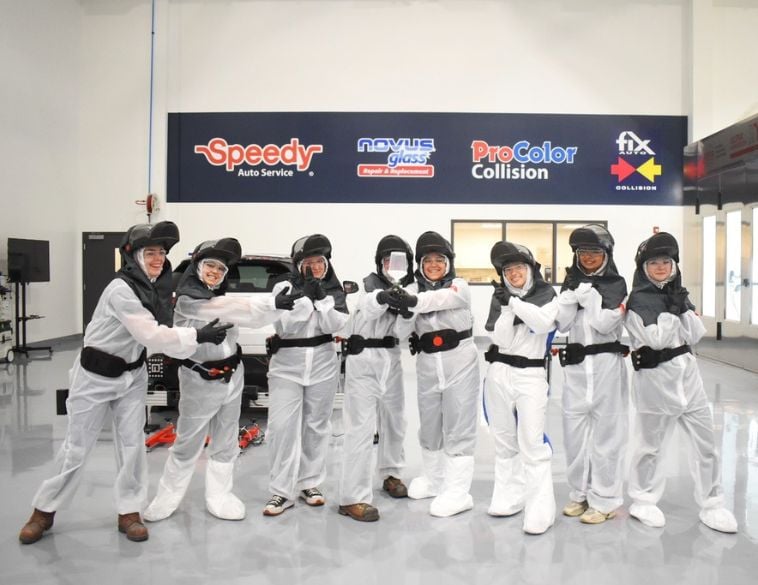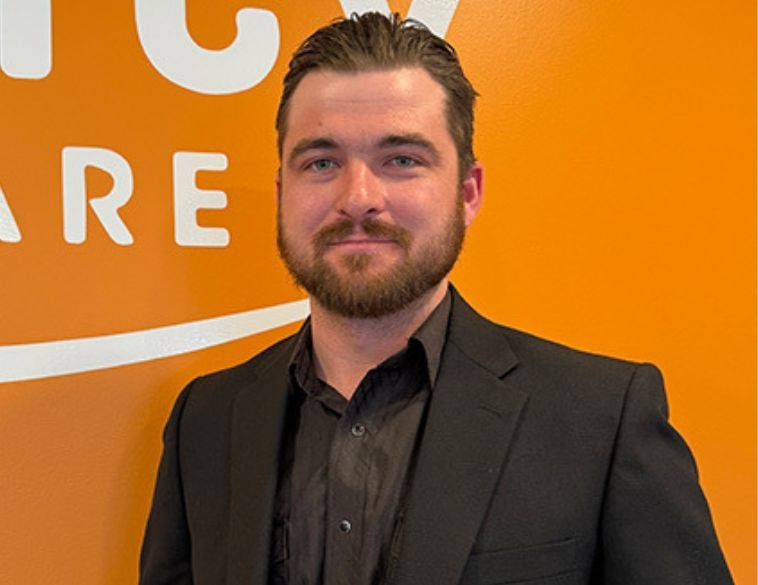The event highlights training, solutions, and products for more efficient and better repairs.
In February, AkzoNobel hosted an Open House at its Canadian Headquarters, in Etobicoke, Ontario, in the Greater Toronto Area. The event provided an opportunity for collision repair and automotive industry professionals to gain insight into the latest coatings, products, processes, and solutions.
Autosphere attended and had the opportunity to visit AkzoNobel’s on-site training centre and take a look at the newly installed Santint AC100 automated paint dispenser.
Saving time and money
Dave Woolley, Technical Consultant, Automotive and Specialty Coatings, with AkzoNobel, explained that the AC100 saves time, by automatically providing accurate tinting, saving not only 50% in labour time but also reducing toner usage by approximately 30%. It can mix solid colours, metallics and pearls and from loading the toner into airtight canisters in one of three carousels, choosing the formula, mixing the paint and dispensing the finished product, the entire process takes all five minutes. Besides efficiency, the AC100 enables virtually anyone in the collision centre to operate it and correctly mix automotive paint finishes, ensuring accuracy and consistency, as well as eliminating the risk of using the wrong toner.
Woolley also discussed the benefits of having an on-site training centre and how it’s enabling collision repair centres to effectively upskill and advance the capabilities of their refinishing staff. Woolley says on average, he conducts two training classes per month, and the benefits are exponential, including better results, higher quality paint finishes and reduced risk of re-works, which can cost collision centres, more than $5,600 per vehicle, something for shops to consider, especially if the training itself is complimentary and the benefits of attending far outweigh, the few days of staff absence from the collision centre.
ADAS coating considerations
Brad Kruhlak, Technical Manager, Canada, for AkzoNobel, delivered a session focused on ADAS coatings and advances in coating technology, as well as specific repair methods required when repairing parts of the vehicle such as bumper covers that have mounts for sensors or cameras. “Every vehicle model is different,” said Kruhlak, “so for example, performing a repair on a Honda Civic is different than doing the same area on a Honda Accord.” He noted that AkzoNobel has worked with OEMs to develop coatings that meet their specific requirements for individual vehicles and that it’s critically important that collision centres and refinish departments, follow the exact OEM repair requirements.
A major reason is that, for a late-model vehicle to function correctly, it is essential that sensors maintain their integrity and functionality. When performing repairs, including bonding or sanding, as well as refinishing parts, if the exact OEM repair procedure isn’t followed, the operation of those sensors or cameras can be compromised by the coating itself (such as some metallics), the way the process is performed, or the coating applied. Kruhlak noted that while technology continues to advance and coatings manufacturers like AkzoNobel are offering products that work more effectively with ADAS systems, including metallic finishes, the technology continues to advance all the time, which is why shops and technicians avoid following the correct, up-to-the-minute OEM repair procedures do so at their peril.
Visual production flow
John Cox, Canadian Services Manager at AkzoNobel, ran us through Carbeat, the company’s visual production management system. Carbeat is designed to help improve workflow through collision centres, enabling the entire team to know exactly which stage each vehicle within the production process is at any given time. Carbeat links to estimating platforms and the information is available in real-time once that estimate has been completed, the vehicle to which it is linked is populated on the board.
Because Carbeat visually shows where each vehicle is and allows the entire team to communicate through the system, it boosts accountability and process efficiency. Since adopting Carbeat, some collision centres have seen their cycle times decline by two days or more. “Every movement within Carbeat is timestamped,” explained Cox. “And, if you’re keeping everything up to date in Carbeat, you’re going to get some extremely robust analytics,” he said.
Because the system is visual and each type of vehicle repair has a specific colour, it also enables collision centres, to properly organize their schedule, ensuring they have the right balance of heavy hits and more minor repairs, to ensure optimized workflow and cycle time efficiency.
And because all information is updated in real-time, it not only amplifies the importance of each vehicle report, it also allows shops to track how long it is taking to complete repairs over a weekly or even monthly basis, where there are specific issues, such as parts delays on certain models, delays in getting approvals for repairs, or other inefficiencies. Armed with these analytics, collision vehicles can better determine ways to improve efficiency through the shop for each job class, giving them the opportunity to boost revenue and overall profitability.
Improving recruitment and development
Also part of the AkzoNobel Open House was a feedback session, where attendees were encouraged to identify and provide information on how the industry can improve recruitment and training practices, as well as optimize productivity for its employees.
Overall, it was great to be given the opportunity to attend this kind of event and glean a greater understanding of how refinish providers like AkzoNobel aren’t just providing products and solutions to the industry but are actively creating long-term partnerships with collision centres and other key stakeholders that benefit the entire sector.



